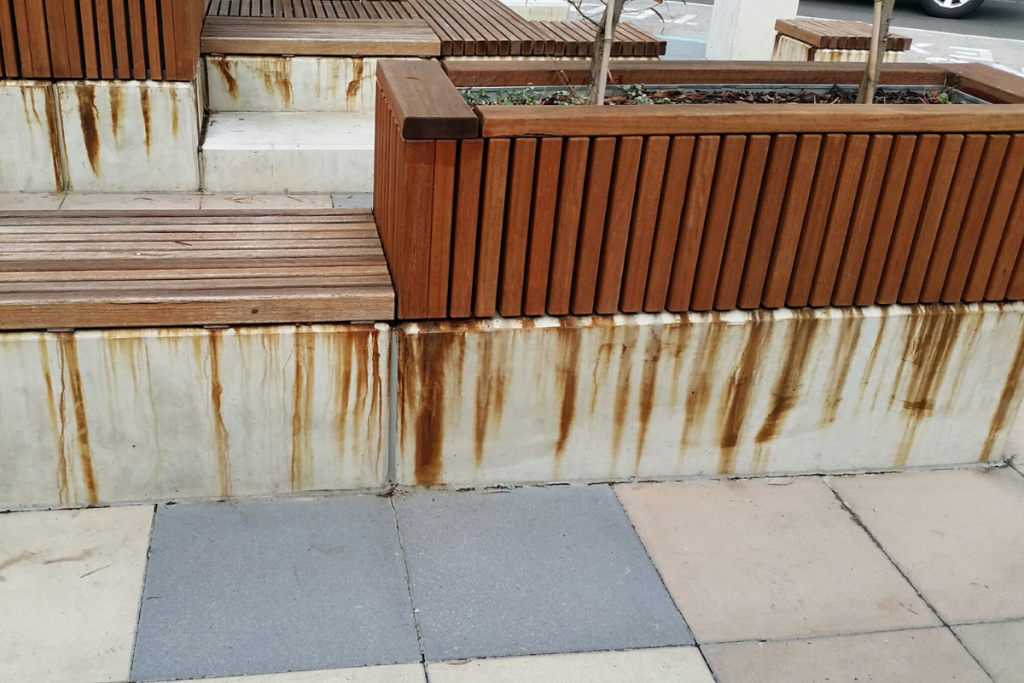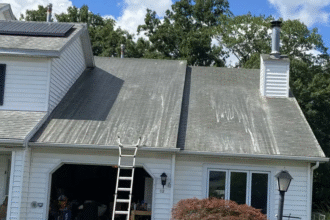A common issue that results in unsightly brown or tan discolorations on varnished wood surfaces is tanning staining. This phenomenon is particularly prevalent in woods with high tannin content, such as cedar, mahogany redwood city, and California. Understanding the causes, workable solutions, and preventive measures is crucial for professional painters, hobbyists, and homeowners.
What is tannin staining?
Tannin washing is the term for the orange or tan darkening that appears on the margins of coloured wood. This occurs when the tannins, one of the acidic compounds found inherently within particular trees, penetrate the paint layer from the wood substrate and leave behind stains on the surface. These stains, which are more noticeable on brighter paint colors, may detract from the paint job’s aesthetic appeal.
Reasons for Tannin Discoloration
Tannin staining may be caused by a number of factors:
1. Wood Species: Some woods, referred to as “staining woods,” contain a lot of tannin. These consist of mahogany, cedar, and oak. Tannins may discolor certain woods when they are coated improperly because they can seep through the paint.
2. Insufficient stimulation Tannins may seep below the paint layer if the wood surface is not sufficiently primed and sealed preceding painting. This problem is made worse by using a primer that is not made expressly to remove tannin stains.
3. Moisture Intrusion: Tannins may be transferred to the paint surface by excessive moisture leaking through the wood. This moisture may originate from the wood’s internal sources or from outside environmental elements like rain and dampness.
4. Inadequate Painting Circumstances: Painting in chilly, humid weather or just prior to they happen might extend the drying period and give polyphenols more chance to rise to the top.
The chemical tan The staining Solutions
Surface due diligence, choice of products, and controlling the environment are all necessary to handle tannin staining:
1. Determine and Address Dryness Sources: Find and address any sources of excessive condensation prior to a fresh coat of This might include fixing condensing problems, enhancing breathes, or patching leaks.
2. Surface Cleaning: To get rid of any impurities and loose paint, give the stained surface a thorough cleaning. Depending on how bad the staining is, a scraper, wire brush, or pressure washer may be used.
3. Application of Stain-Blocking Primers: Use a premium stain-blocking primer made especially to stop tannin leak. Because of their excellent sealing qualities, priming that are oil- or shellac-based are often suggested. A second layer of primer could be required in situations where the discoloration is excessive.
4. Appropriate Setting Time: Before pouring the topcoat, let the primed surface completely dry. This guarantees that the tannins have been sufficiently sealed by the primer and that the outside is prepared for painting.
5. Use of Premium Paint: Apply a premium paint that complements the priming that was applied. This results in a long-lasting, visually beautiful finish that is stain-resistant.
Preventive Actions
It is less time-consuming and more efficient in avoiding tannin staining than to treat it once it has already happened. Take into account the subsequent preventative measures:
- Appropriate Wood Selection: For painted projects, if at all feasible, use wood species with a reduced tannin content, particularly in damp locations.
- Complete Sealing: Prior to deployment, prime the frame on all sides, notably the ends and angles. This thorough bonding method reduces tannin transport and humid ingress.
- Environmental Control: Steer clear of painting in areas with high humidity or approaching precipitation. For drawing, make sure the wood’s transpiration rate is less than 10% since greater wet content will encourage tannin bleed.
- Regular Maintenance: Look for indications of staining or moisture damage on painted wood surfaces on a regular basis. Early identification enables timely corrective action, averting more serious harm.
Conclusion
If left untreated, acording to bay – valley painting or tanning staining is a simple and avoidable problem that may reduce the lifespan and aesthetic appeal of painted wood surfaces. One may obtain a long-lasting and aesthetically pleasing finish by comprehending the reasons and using the correct prep and painting procedures. To guarantee the best results, always seek advice from paint experts or follow the directions provided by the maker for specific to a particular advice.

















